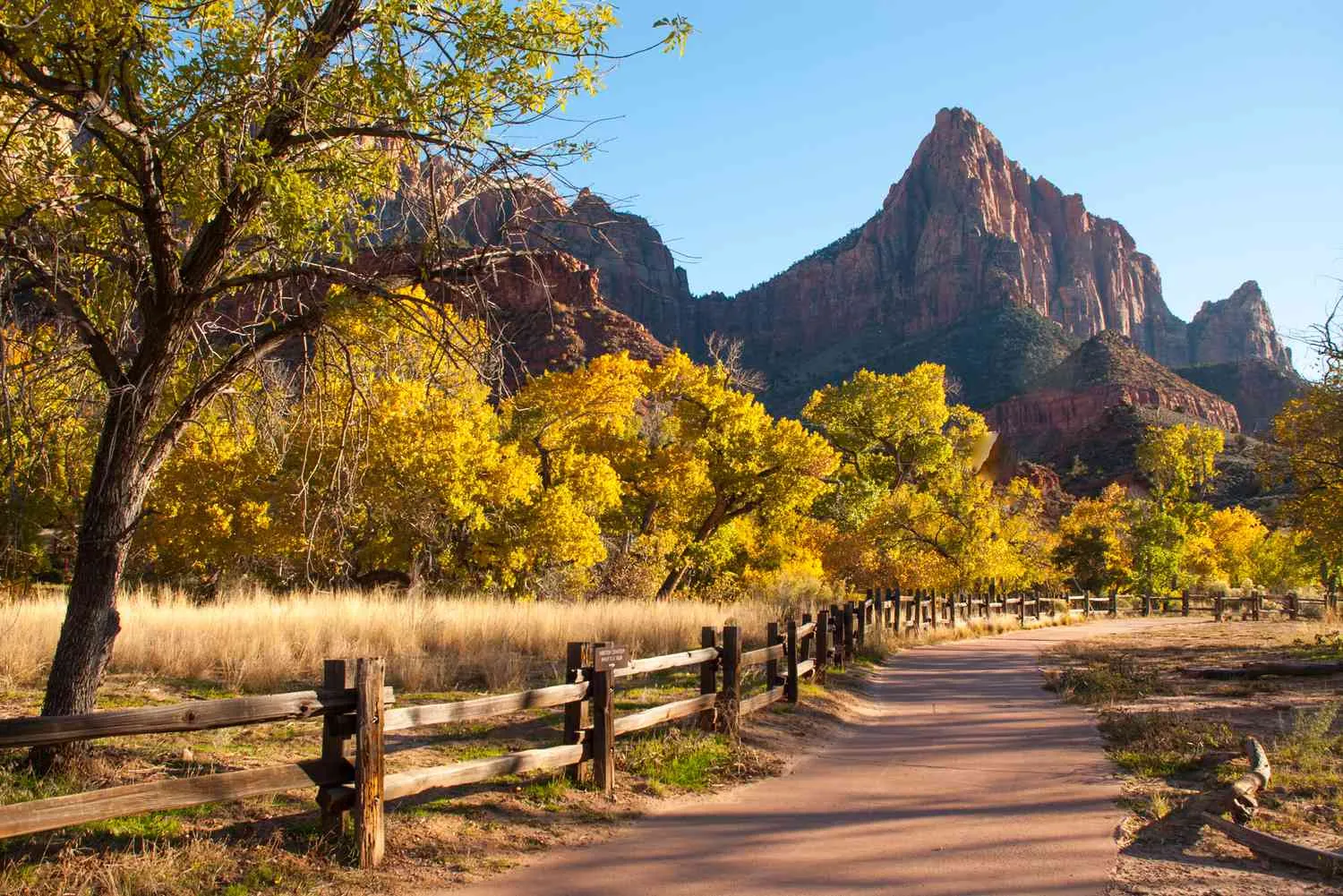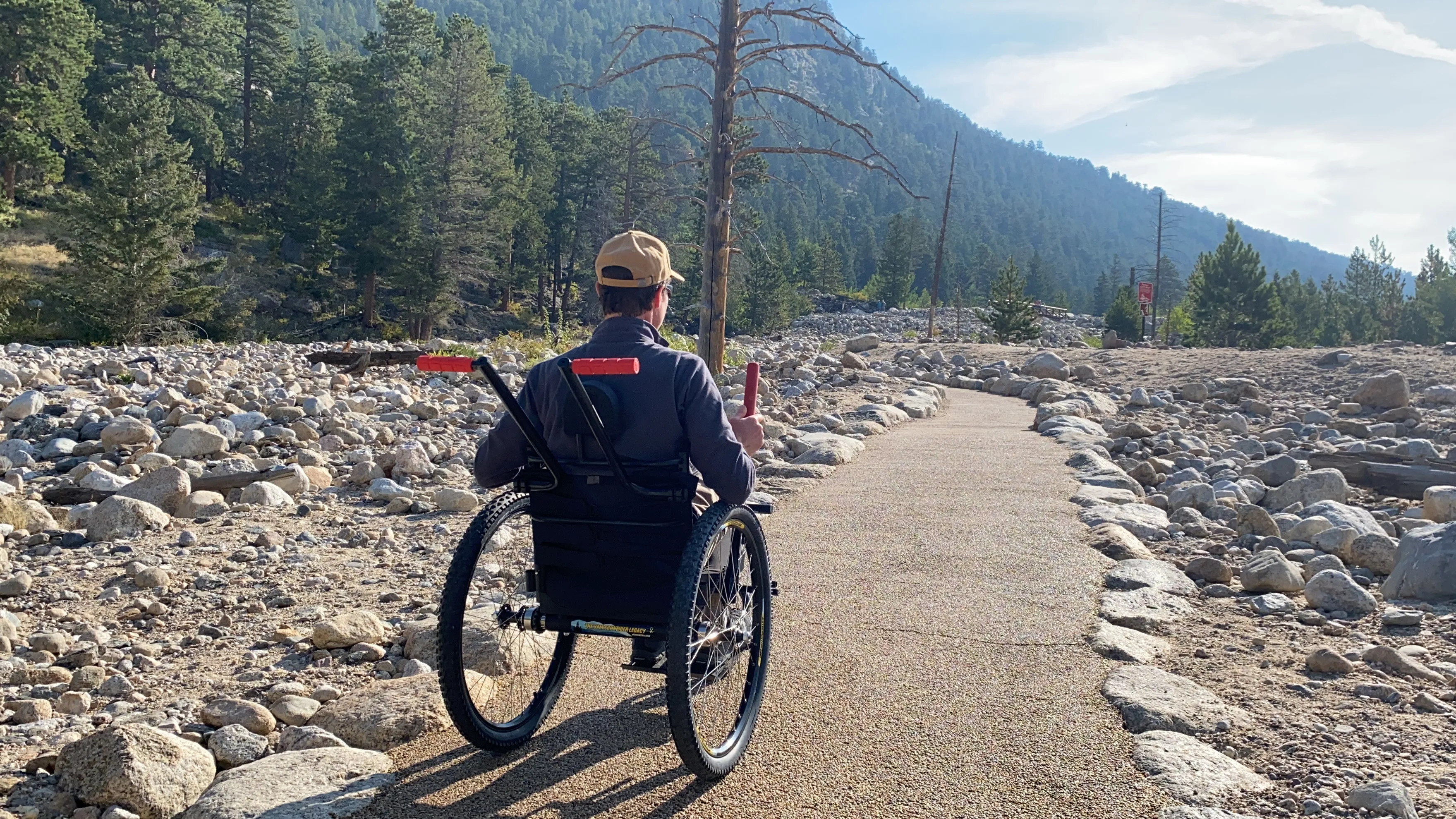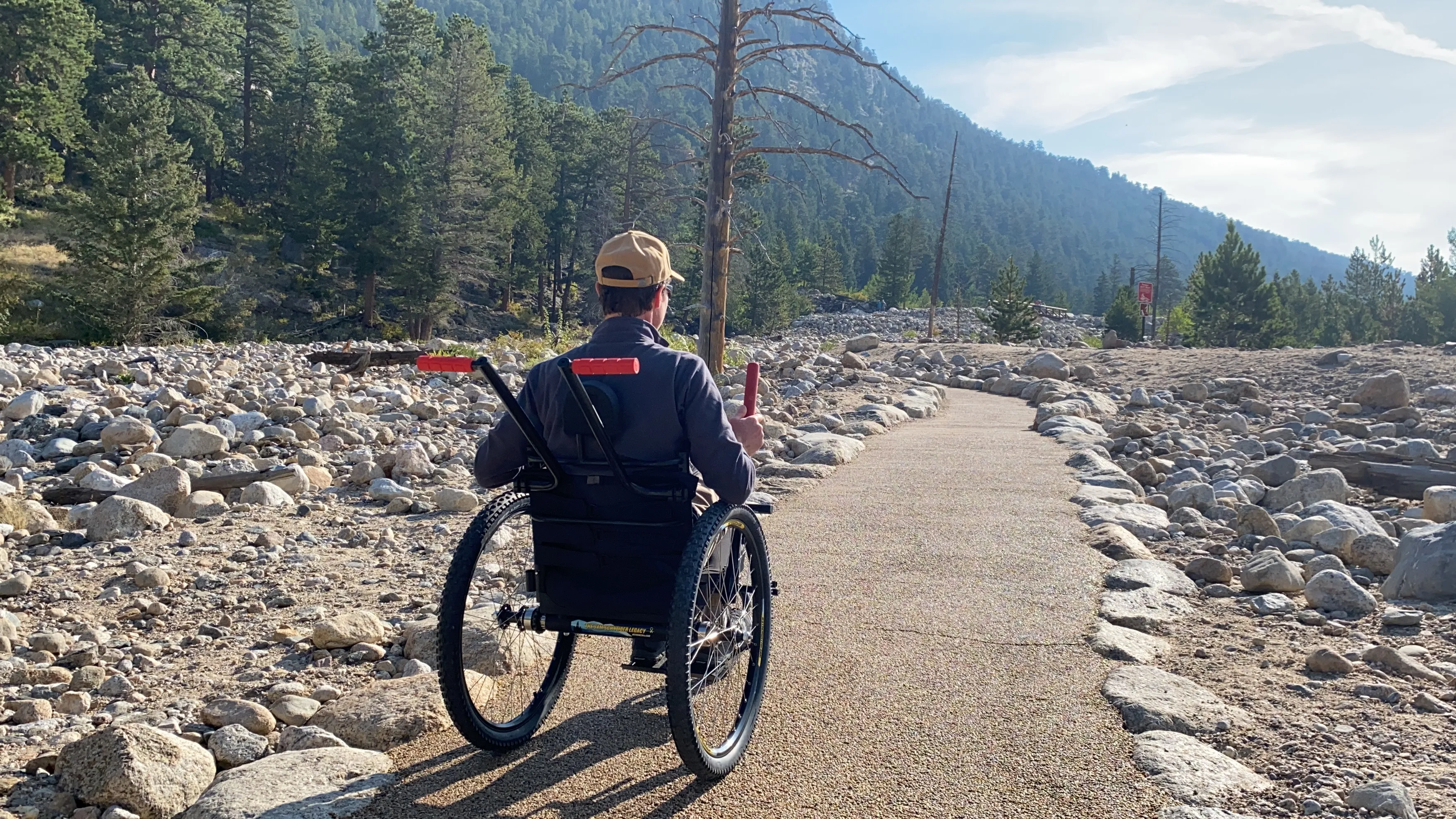Discover America's most beautiful trails designed for everyone
Exploring the great outdoors shouldn't be limited by mobility. I've spent years researching and personally visiting wheelchair accessible hikes across the United States, and I'm excited to share my comprehensive guide to help you discover some of America's most breathtaking trails. Whether you're planning your first accessible adventure or looking for new destinations, this guide covers everything from national park gems to hidden local treasures, ensuring every outdoor enthusiast can experience the beauty of nature.
Planning Your Accessible Adventure

When I first began exploring wheelchair accessible hikes US destinations, I quickly learned that proper planning makes all the difference between a frustrating experience and an unforgettable adventure. The key to successful accessible hiking lies in understanding trail specifications, weather conditions, and your personal mobility needs. Through my years of experience visiting accessible trails across the country, I've developed a systematic approach that ensures every outing is both safe and enjoyable.
Trail grades are perhaps the most critical factor to consider when evaluating wheelchair accessible hikes US locations. The Americans with Disabilities Act (ADA) sets specific standards for accessible trails, typically requiring slopes of less than 5% for extended distances, with brief sections up to 8.33% permitted. However, I've found that many trails labeled as "wheelchair accessible" may still present challenges depending on your specific mobility device and physical condition. Always check the official park website or contact rangers directly for detailed trail information, including surface materials, width requirements, and any seasonal accessibility changes.
Weather considerations play a crucial role in planning successful wheelchair accessible hikes US adventures. Rain can make even well-maintained trails slippery and dangerous, while extreme temperatures affect both equipment performance and personal comfort. I always recommend checking weather forecasts up to a week in advance and having backup indoor activities planned. Spring and fall typically offer the best conditions for most accessible trails, with moderate temperatures and stable weather patterns that enhance the overall hiking experience.
Accessibility varies significantly between different types of mobility devices. Power wheelchairs generally handle paved surfaces and gentle grades with ease, while manual wheelchairs may require assistance on longer trails or steeper sections. All-terrain wheelchairs open up additional possibilities for more adventurous hikers, though these specialized devices may not be necessary for most accessible national park hikes. Understanding your equipment's capabilities and limitations helps you choose appropriate trails and prepare for any challenges you might encounter.
Essential Trail Planning Tool
Get Trail Planning Guide BookTop National Parks for Wheelchair Accessible Hikes
.webp)
America's national parks offer some of the most spectacular wheelchair accessible hikes US destinations, each providing unique landscapes and experiences. During my extensive travels across the country, I've personally visited and tested dozens of these accessible trails. The national park system has made significant investments in accessibility infrastructure, creating opportunities for everyone to experience America's natural wonders regardless of mobility limitations.
Yosemite National Park - Lower Yosemite Falls Trail
The Lower Yosemite Falls Trail stands out as one of the premier wheelchair accessible hikes US destinations. This 1.1-mile loop features mostly paved surfaces with only a brief section approaching 14% grade. I've visited this trail during different seasons, and the experience varies dramatically - spring offers thundering waterfalls from snowmelt, while late summer provides a more gentle cascade. The trail includes tactile exhibits and wheelchair-height viewing areas, making it truly inclusive for all visitors.
Grand Canyon National Park - Trail of Time
The Trail of Time represents geological history in an accessible format, with each meter representing one million years of Earth's history. This paved trail stretches for 2.83 miles along the South Rim, offering consistent wheelchair access with minimal elevation change. Rock specimens and interpretive displays provide educational content while spectacular canyon views serve as the main attraction. I particularly recommend visiting during sunrise or sunset for the most dramatic lighting conditions.
Great Smoky Mountains - Sugarlands Valley Nature Trail
As the most visited national park in America, Great Smoky Mountains offers the Sugarlands Valley Nature Trail as its primary accessible option. This half-mile paved loop follows the Little Pigeon River through second-growth forest. The trail features numerous benches and rest areas, making it suitable for visitors with varying stamina levels. Historic remnants of the Sugarlands settlement add cultural interest to the natural beauty, and the area serves as an excellent introduction to family-friendly hiking experiences.
Zion National Park's Pa'rus Trail deserves special mention among wheelchair accessible hikes US destinations. This 3.5-mile paved trail offers stunning views of the Watchman and other iconic red rock formations while following the Virgin River. The trail's wide, smooth surface accommodates all types of mobility devices, and shuttle connections make it easy to customize your hiking distance. I've found early morning visits provide the best lighting and fewer crowds, enhancing the overall experience significantly.
National Parks Access Pass
Get Parks Access InformationRegional Accessible Trail Gems

Beyond the famous national parks, numerous regional destinations offer exceptional wheelchair accessible hikes US experiences. State parks, wildlife refuges, and local trail systems often provide more intimate and less crowded alternatives to major tourist destinations. These hidden gems frequently offer unique ecosystems and specialized accessibility features that make them worth seeking out for serious accessible hiking enthusiasts.
Northeast Regional Highlights
The Northeast corridor offers remarkable diversity in wheelchair accessible hikes US options. Acadia National Park's carriage roads provide 45 miles of accessible trails with crushed stone surfaces, originally designed for horse-drawn carriages in the early 1900s. The Jesup Path and Hemlock Path Loop combines boardwalks with packed gravel surfaces, creating a 1.5-mile accessible experience through diverse forest ecosystems. These trails showcase the region's commitment to preserving both natural beauty and historical accessibility infrastructure.
White Mountain National Forest's Lincoln Woods Trail demonstrates how federal forest lands can provide accessible wilderness experiences. This 2.9-mile out-and-back trail follows the Pemigewasset River on a packed dirt surface suitable for most mobility devices. The trail connects to a suspension bridge and offers access to the Pemigewasset Wilderness Area, providing a true backcountry experience without compromising accessibility standards.
Western Accessible Adventures
The American West offers some of the most dramatic wheelchair accessible hikes US destinations. Sequoia National Park's Big Trees Trail provides close encounters with giant sequoias on a 0.7-mile paved loop. These ancient trees, some over 2,000 years old, create a cathedral-like atmosphere that makes this trail particularly memorable. The relatively flat terrain and excellent trail maintenance make it accessible to virtually all mobility devices while providing an unforgettable natural experience.
Glacier National Park's Trail of the Cedars showcases the Pacific Northwest's temperate rainforest ecosystem on a 0.7-mile partially paved trail. The combination of ancient cedar trees, Avalanche Creek, and mountain views creates a sensory experience that exemplifies the region's natural beauty. While some sections require all-terrain wheelchairs or assistance, the trail's unique features make it worth the extra planning required for accessibility.
Understanding proper trail etiquette becomes especially important on these regional trails, where you'll encounter diverse user groups including hikers, cyclists, and other wheelchair users. Maintaining courteous behavior and following Leave No Trace principles helps preserve these valuable accessible resources for future generations.
Trail Navigation Made Easy
Get GPS Trail NavigatorEssential Gear and Equipment
Proper equipment selection can transform challenging wheelchair accessible hikes US experiences into comfortable and enjoyable adventures. Through years of trial and error, I've identified essential gear categories that significantly improve trail accessibility and safety. The right equipment not only enhances your hiking experience but also provides confidence and independence on the trail, allowing you to focus on enjoying nature rather than worrying about obstacles.
Mobility Device Modifications
Wheelchair modifications can dramatically expand your range of accessible trails. All-terrain tires provide better traction on gravel and packed dirt surfaces, while FreeWheels attachments lift front casters for easier navigation over roots and small obstacles. Power assist devices like the SmartDrive can help manual wheelchair users tackle longer distances and gentle inclines without excessive fatigue. These modifications are particularly valuable for exploring scenic hiking destinations that might otherwise be challenging.
Weather protection becomes crucial for extended outdoor activities. Wheelchair-specific rain covers protect both user and equipment from sudden weather changes, while specialized gloves designed for wheelchair use provide better grip and protection during pushing motions. Portable ramps can overcome small obstacles or steps that might otherwise block trail access, making them invaluable for accessing trailheads and facilities.
Safety and Navigation Equipment
Emergency preparedness takes on special importance for wheelchair users on trails. Portable wheelchair repair kits should include tire patches, allen wrenches, and spare parts specific to your mobility device. GPS devices or smartphone apps with offline maps ensure you can navigate even in areas with poor cell coverage. Emergency communication devices like satellite messengers provide peace of mind during solo adventures on remote wheelchair accessible hikes US destinations.
Comfort accessories significantly improve the hiking experience. Wheelchair cushions designed for outdoor use provide better support during long outings, while portable tables attach to wheelchairs for convenient rest stops and meal breaks. Insulated water bottles with easy-access straws keep you hydrated without requiring stops to retrieve drinks from storage bags.
Essential Trail Safety Kit
Get Trail Safety EquipmentSafety Tips and Trail Etiquette
Safety considerations for wheelchair accessible hikes US adventures extend beyond typical hiking precautions. Mobility device users face unique challenges including equipment failure, weather exposure, and navigation difficulties that require specialized preparation and awareness. I've learned through experience that thorough safety planning allows for more adventurous and confident exploration of accessible trails across the country.
Pre-Trail Safety Protocols
Equipment inspection before each outing prevents most trail emergencies. Check tire pressure, battery levels, and mechanical components for wear or damage. Carry contact information for local wheelchair repair services and emergency contacts. Inform someone of your planned route and expected return time, especially when exploring remote wheelchair accessible hikes US locations. Many national parks offer voluntary check-in services for solo hikers and wheelchair users.
Weather monitoring requires special attention for wheelchair users. Hypothermia risk increases due to limited mobility and reduced circulation, while heat exhaustion poses dangers from decreased thermoregulation. Plan routes with adequate shelter options and bailout points where you can seek protection or assistance if conditions deteriorate. Seasonal considerations affect trail accessibility, with spring mud seasons and winter conditions creating hazardous surfaces even on normally accessible trails.
Trail Etiquette and Interaction
Positive interactions with other trail users benefit everyone and promote understanding of accessibility needs. Most hikers respond positively to friendly greetings and brief conversations about trail conditions. Sharing information about accessibility features helps other mobility device users while educating able-bodied hikers about inclusive trail design. These interactions contribute to a more welcoming outdoor community for all users.
Right-of-way guidelines generally favor uphill traffic and faster-moving users, but practical considerations may require flexibility. Wheelchair users often need more time to navigate obstacles or move aside for passing, and clear communication prevents misunderstandings. Most trail users appreciate brief explanations of accessibility challenges and cooperate willingly when approached respectfully. Building positive relationships with park staff and fellow hikers creates a supportive network for future adventures on wheelchair accessible hikes US destinations.
Leave No Trace principles apply equally to all trail users, regardless of mobility status. Wheelchair users can minimize impact by staying on designated surfaces, packing out all trash, and avoiding shortcuts that might create erosion or damage vegetation. Demonstrating environmental responsibility helps counter any misconceptions about accessibility modifications and trail impact while preserving these valuable resources for future generations to enjoy.
Complete Safety and Comfort Package
Get Wheelchair Hiking PackConclusion
The landscape of wheelchair accessible hikes US destinations continues to evolve and expand, offering unprecedented opportunities for outdoor adventure and natural connection. Through my extensive research and personal exploration of these trails, I've witnessed the transformative power of accessible outdoor experiences and the growing commitment to inclusive trail design across America's public lands. The trails and destinations covered in this guide represent just a fraction of the accessible hiking opportunities available throughout the country.
Planning and preparation remain the cornerstones of successful accessible hiking adventures. Understanding trail specifications, weather conditions, and personal equipment needs enables confident exploration of new destinations while maintaining safety and comfort. The resources and techniques outlined in this guide provide a foundation for expanding your accessible hiking horizons, whether you're a beginning explorer or an experienced adventurer seeking new challenges.
The future of accessible outdoor recreation looks increasingly bright, with ongoing improvements to trail infrastructure, expanded accessibility programs, and growing awareness of inclusive outdoor design principles. New wheelchair accessible hikes US destinations emerge regularly as park agencies and trail organizations recognize the importance of providing equitable access to natural spaces. By supporting these initiatives through visits, feedback, and advocacy, we contribute to a more inclusive outdoor community that benefits everyone.
I encourage you to start with the trails that match your current abilities and gradually expand your adventures as you gain experience and confidence. Every accessible hiking experience, from short nature walks to multi-mile trail explorations, contributes to a deeper connection with the natural world and a greater appreciation for the ongoing efforts to make outdoor recreation truly accessible to all. For more information on accessible outdoor adventures, visit our comprehensive resource at our complete accessible hiking guide.
Remember that accessible hiking is not just about reaching destinations—it's about experiencing the journey, connecting with nature, and demonstrating that outdoor adventures are possible for everyone. The trails are waiting, and with proper planning and the right approach, your next accessible hiking adventure can be both safe and spectacular.


